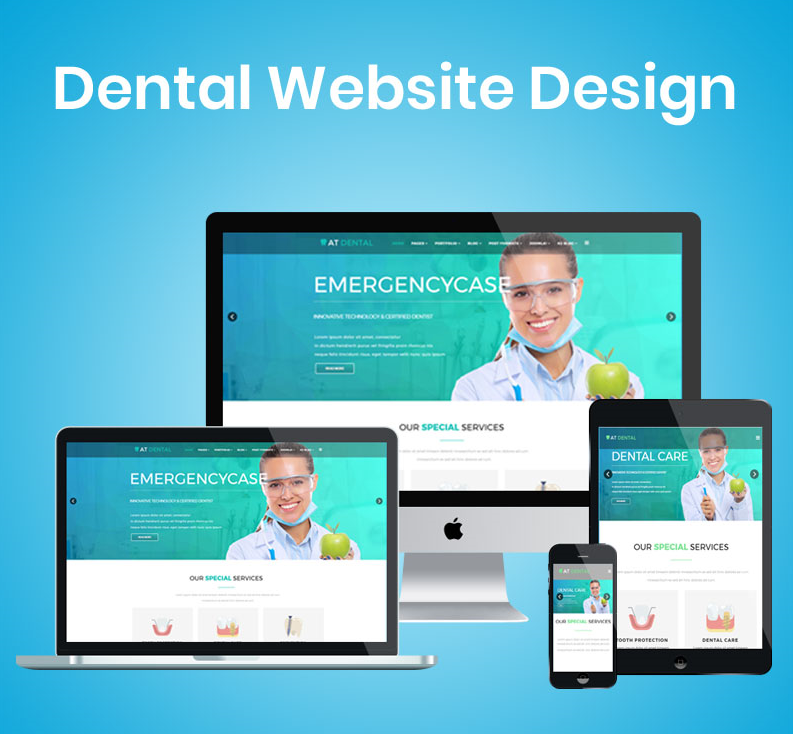Dental Website Development.

Creating a user-friendly, educational, and expert online presence for your dental practise calls for careful planning, design, and implementation when developing a dentistry website.
Here is a step-by-step manual to assist you in creating a dentistry website:
Step 1 : Define Your Goals and Audience
Establish the main objectives for your dentistry website. Do you want to offer online appointment scheduling, advertise your services, exhibit your knowledge, or draw in new clients?
Decide who your target market is. Take into account patient demands, demographics, and the kinds of dental services you provide.
step 2: Choose a domain name and hosting in
Choose a domain name that is simple to remember and matches the name or services of your practise.
Pick a reputable web host that provides quick load speeds and secure hosting.
Step 3: Arrange the Content and Structure of Your Website
The primary pages of your website, such as Home, About Us, Services, Patient Information, Blog, Contact, and Testimonials, should be listed in a sitemap. Create excellent, educational, and interesting material for each page. Include information about your dental team, staff, practises, and patient resources.
Step 4: Design and Layout
Select a simple, contemporary style that complements the branding of your dental practises and communicates professionalism and trust.
Make sure your design is responsive so that it works well on PCs, tablets, and smartphones. To make a website that is visually appealing, use high-quality pictures of your dentist clinic, employees, and clients.
Step 5: Include dental-specific elements
Implement online appointment booking to make it convenient for patients to make appointments.
Include patient forms that can be completed online to cut down on time spent in the office.
Give prospective clients a virtual tour of your dentist clinic to make them feel at ease before their appointments.
Offer instructional materials, such as advice on maintaining oral health and answers to frequently asked questions about dental procedures.
Step 6: SEO Optimization
Add pertinent keywords pertaining to dental services, locations, and specialties to the content of your website.
Add headers, meta tags, and picture alt text to increase your website’s exposure in search results.
Make sure your website loads quickly and is responsive to mobile devices, as both are crucial for SEO.
Step 7 : Patient Reviews & Testimonials
To establish credibility and trust, highlight patient endorsements.
Integrate social proof components to highlight the standing and patient happiness of your dental practise.
Step 8: Security and Conformity
Ensure your website conforms with data protection laws, such as HIPAA (if applicable), if you intend to gather patient information through forms or appointment bookings.
To protect patient data and make your website more trustworthy, use SSL encryption.
Step 9: Launch and Promotion
To ensure that all links, forms, and capabilities on your website operate as intended, give it a comprehensive test.
Launch your dentistry website after you’re happy with it.
To raise awareness of your website, use social media, email marketing, and local online directories.
Step 10: Ongoing Maintenance and Updates
Update your website frequently with new content, such as blog articles, client recommendations, and dental practise news.
Utilise analytics tools to track user interaction and website performance.
Maintain your website’s up-to-date software and security patches and swiftly address any technical difficulties.
To build a solid online presence and reputation for your dental practise, it is crucial to incorporate these stages into the creation of your website. Making a good website that highlights your dental knowledge can not only draw in new clients but also inspire trust in your current ones. The whole patient experience will be improved if your website include useful resources including tools for arranging appointments and information for dental education. By following these guidelines, you can make sure that your dentistry website develops into a potent instrument for expansion, patient involvement, and community trust-building, ultimately resulting in the ongoing success of your practice.
.
Related Posts

10 Digital Marketing Strategies

Best Website Builder for Medical Professionals.


